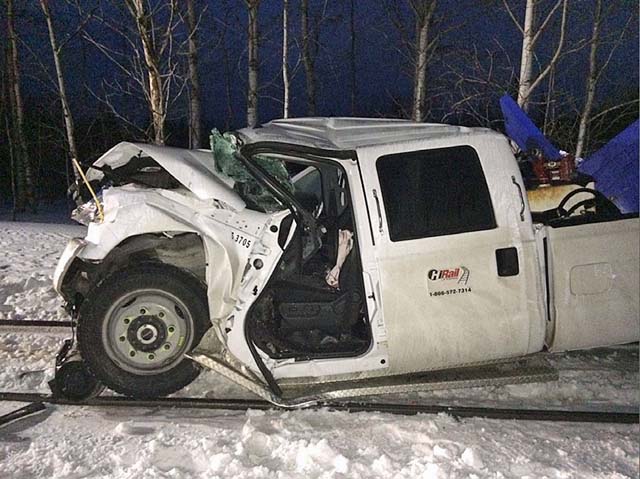

Led to 2016 Collision
Gatineau Quebec - The Transportation Safety Board of Canada (TSB) released
Investigation Report R16H0024 into the March 2016 collision
between a Canadian Pacific Railway (CP) train and a CP hi-rail vehicle near Nemegos, about 25 kilometres east of Chapleau, Ontario.
There were no injuries and no derailment.
On 6 Mar 2016 a CP foreman and a machine operator were performing snow-clearing duties in a siding near Nemegos, Ontario.
After completing their duties at approximately 15:20 local time, the two maintenance-of-way employees boarded a hi-rail vehicle and entered the main track to
proceed westward, intending to exit the track at a nearby crossing.
About 21 minutes later, a CP train travelling eastward saw the vehicle and made an emergency brake application.
When they saw the oncoming train, the two maintenance-of-way employees stopped and quickly got out of the hi-rail vehicle.
Soon after, the train struck the vehicle at 35 mph.
The vehicle was destroyed and the locomotive sustained minor damage.
The investigation determined that the crew was operating the hi-rail vehicle without having obtained a track occupancy permit (TOP) to protect it from
trains.
Further administrative defences were nullified when the crew did not follow other procedures designed to identify errors and enhance situational
awareness.
Consequently, the hi-rail vehicle was operated undetected for about 8 miles.
The foreman was likely fatigued when the crew boarded the vehicle and left the siding.
It was also found that the hi-rail vehicle in this occurrence was not equipped to be detectable by rail traffic control when it was on the track.
If physical safety defences to warn or to intervene when a vehicle has exceeded its TOP limits are not implemented, unsafe situations can remain undetected,
increasing the risk of collisions between trains and track vehicles.
As part of CP's safety management system, safety data are collected and analyzed to identify emerging trends.
There was no indication that CP had specifically identified the upward trend in track vehicles being operated outside their limits of authority.
There is an increased risk of accidents if railways do not regularly review safety data to identify trends, emerging trends, or recurring
situations.
Following the occurrence, CP responded to a Transport Canada letter of non-compliance, indicating that a safety bulletin reviewing the occurrence and
applicable rules was issued to all CP engineering employees.
Over 2,500 employees were tested on track protection procedures.
CP is also exploring methods for electronically requesting TOPs.
Author unknown.
of the Canadian Copyright Modernization Act.


